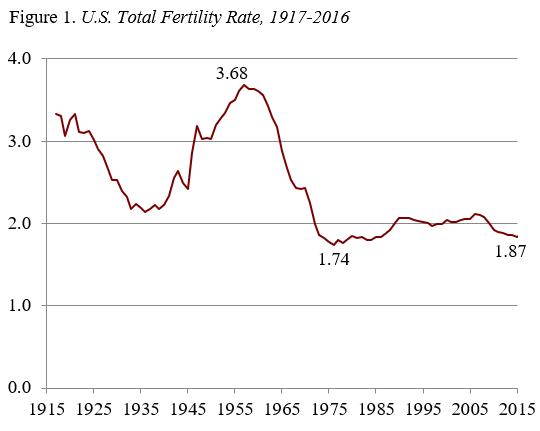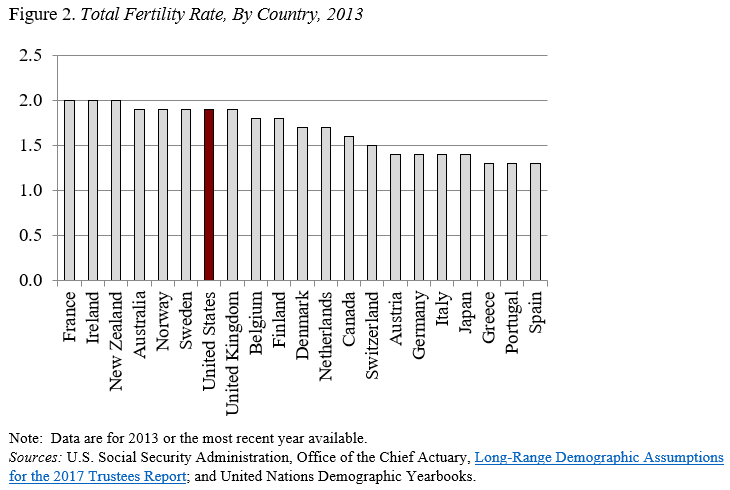
Does America Have a Fertility Problem?
Alicia H. Munnell is a columnist for MarketWatch and senior advisor of the Center for Retirement Research at Boston College.
Is the drop in fertility due to the Great Recession or is it a permanent change?
The fertility rate has enormous implications for the size of our workforce and for the finances of the Social Security system, which operates largely on a pay-as-you-go basis. A decline in the fertility rate would reduce the number of workers paying into the system and lead to a permanently lower ratio of workers to beneficiaries.
Fertility is usually reported in terms of the total fertility rate, which is an estimate of lifetime fertility based on present fertility patterns. It is not the fertility of any real group of women since that measure could only be constructed once they had completed childbearing. Instead the total fertility rate for a given year is the average number of children that would be born to a woman throughout her lifetime if she were to experience, at each age of her life, the birth rates observed in that year.
The large swing in the fertility rate shown in Figure 1 explains much of the shifting financial fortunes of the Social Security program. As the large birth cohorts born during the baby boom (1946-64) enter retirement, they will have to be supported by relatively fewer workers, raising program costs sharply.

The question of interest is whether the decline in the total fertility rate since 2007 is a harbinger of things to come or a temporary blip due to the impact of the Great Recession. Economic downturns generally cause people to postpone having children.
The Social Security actuaries argue that the dip is temporary and that fertility rates will return to their pre-recession levels. They point to data on birth expectations, which have held steady over time. It is also interesting that the number of children ever born to women aged 40-44 – those who have completed their childbearing cycle – has not declined. Of course, this measure of “completed fertility” summarizes childbearing patterns from recent decades and not the intentions of today’s younger women.
On the other hand, the fertility rate in the United States is on the high side compared to those in other developed countries (see Figure 2). Given the lack of support for working mothers in the United States, it’s not inconceivable that our fertility rate could drop.

In any case, what happens to fertility is very important and we should keep our eye on new patterns as they develop.







